Sabotin Hill - a history textbook with a cosy view
Despite its modest height, Sabotin is a well-known and popular excursion point worth visiting for its magnificent views, its turbulent and cruel history, and its natural attractions. Hikers and cyclists can also visit it in the winter months, as it is rarely covered with snow. It can be reached from as many as six directions - some are steep, others are steep but longer, others are asphalted and offer access for cyclists. That's why you'll come back and discover it again and again.

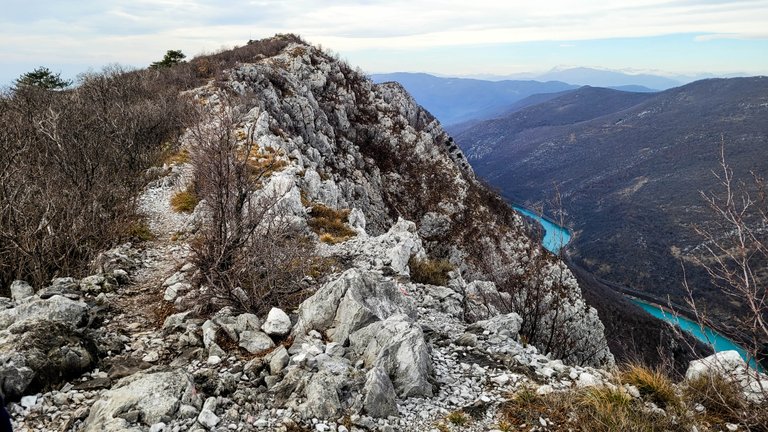



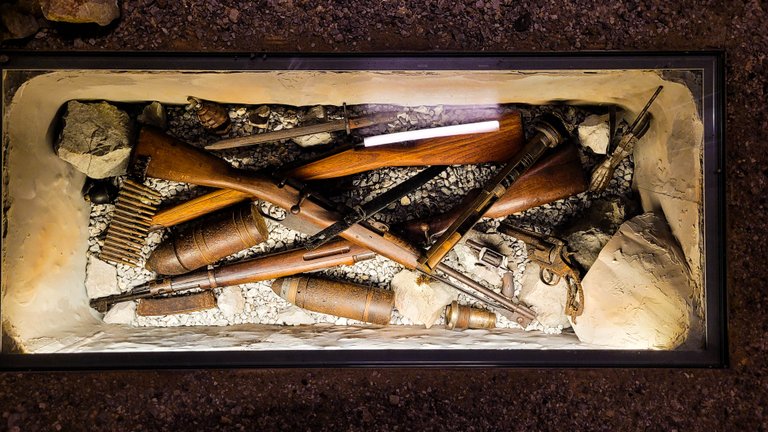
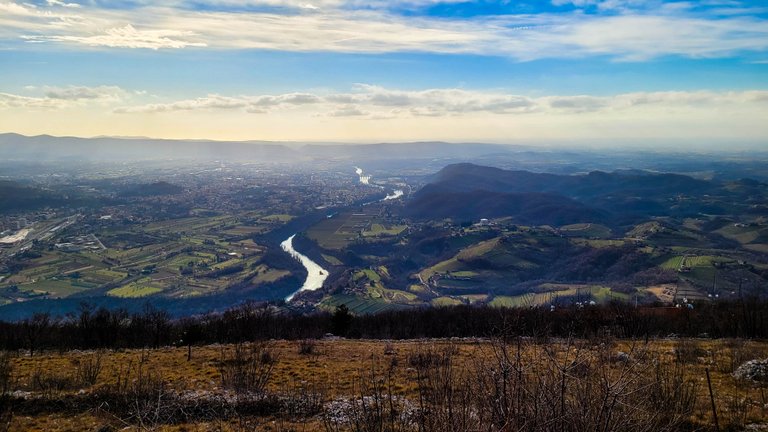

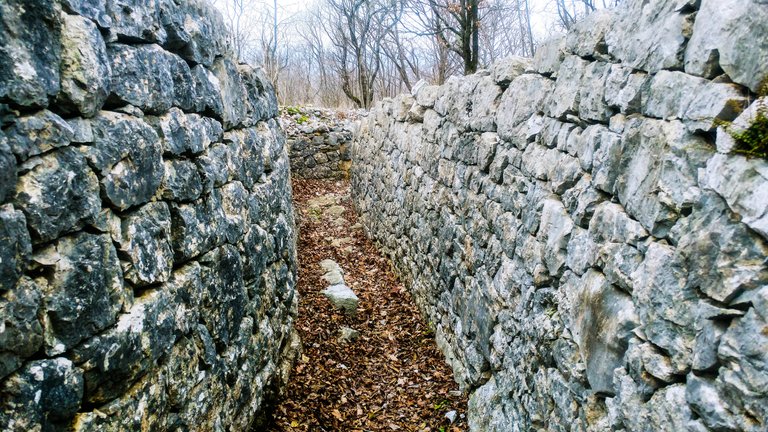
Sabotin is a 609-metre-high hill above Nova Gorica, right on the western border of Slovenia and the eastern Italian border. To be precise, the national border runs right across the hill itself. The location offers magnificent views of Goriska brda and the Italian Coglio, the Italian Friuli, as well as the Karst and the Vipava valley. The Julian Alps and the Gulf of Trieste can also be seen in the distance. At the foot of the hill flows the emerald Soca (Isonzo) River, which envelops the hill and gives visitors magical views of the valley. It offers the visitor much more than the view from the valley would suggest.
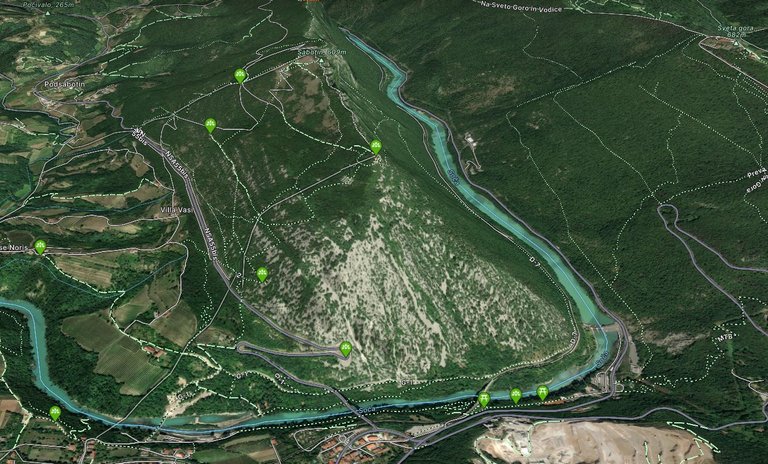
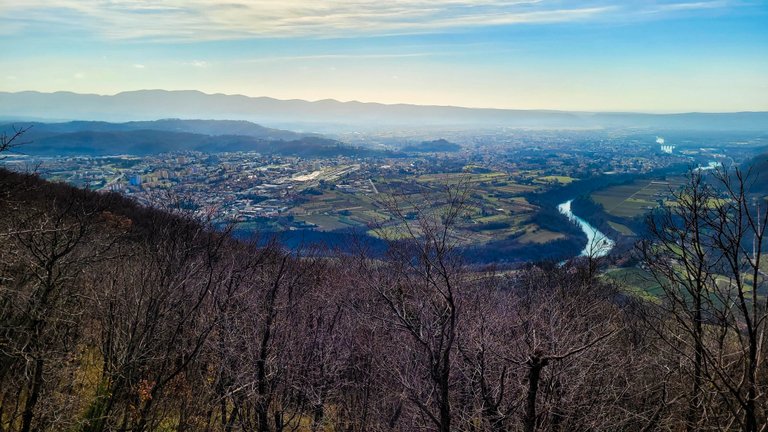


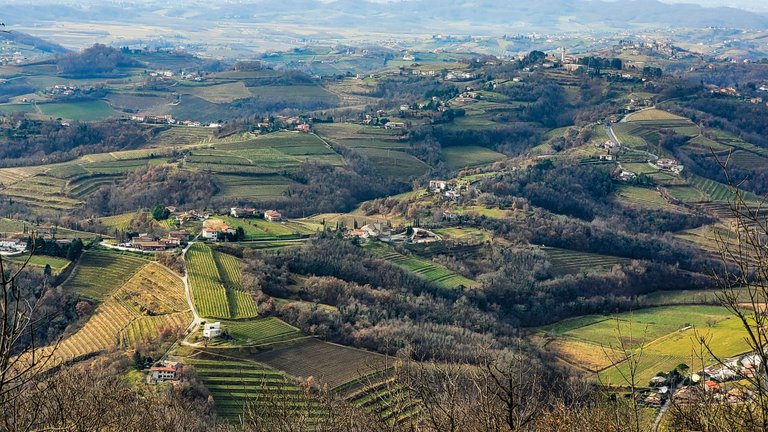
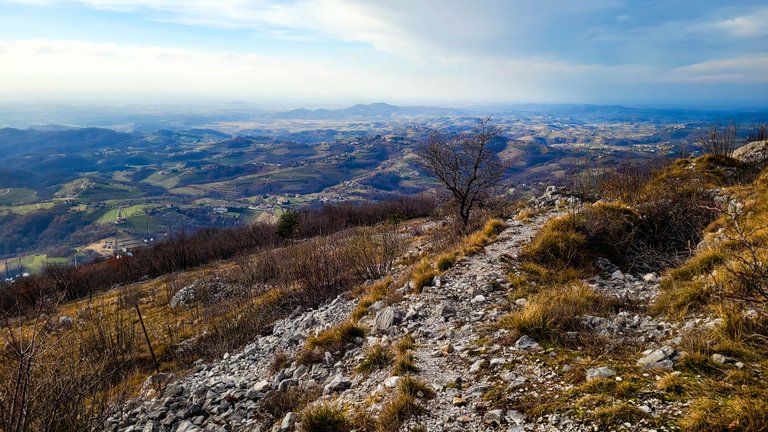
 |  |
|---|

Sabotin is best known for being the site of the Battle of the Bulge during the First World War. It was here that the worst battles of the First World War were fought. It is a very interesting hill from a historical point of view. Even today, on Sabotin, you can walk through the many military tunnels and caverns carved into the rock by Italian and Austro-Hungarian soldiers from 22 nations who fought on the Isonzo Front. The top of the hill is almost completely covered with caverns, tunnels and hiding places.
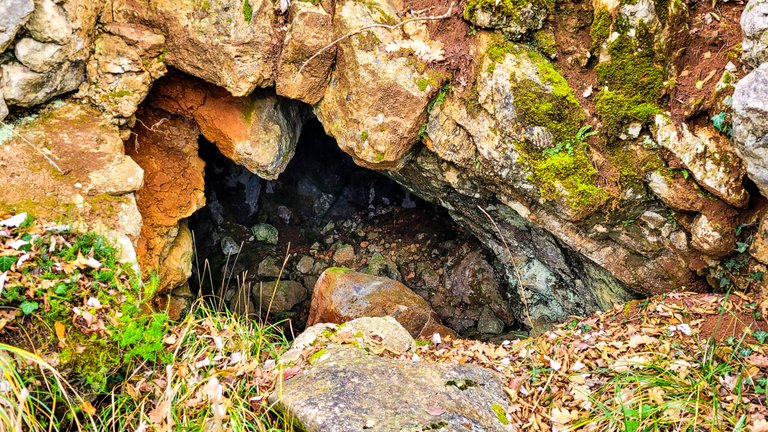 | 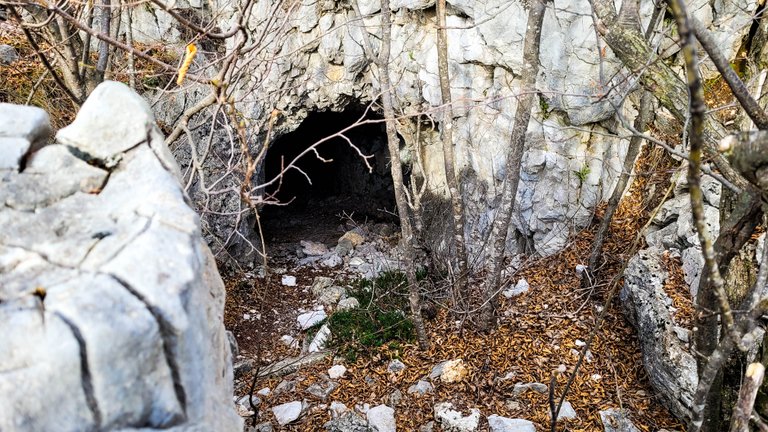 |
|---|
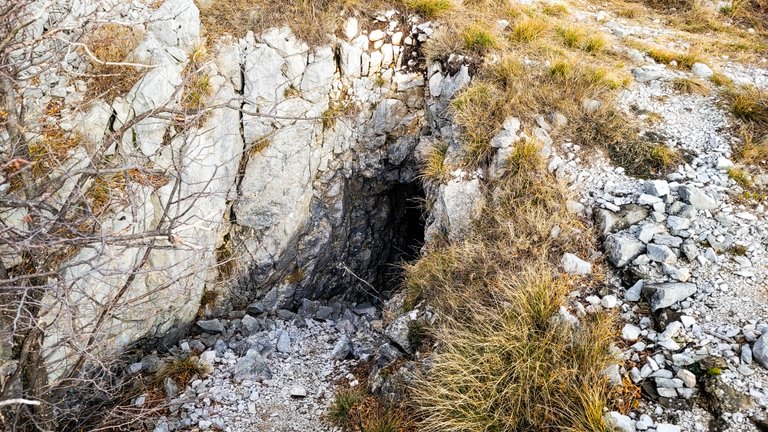 | 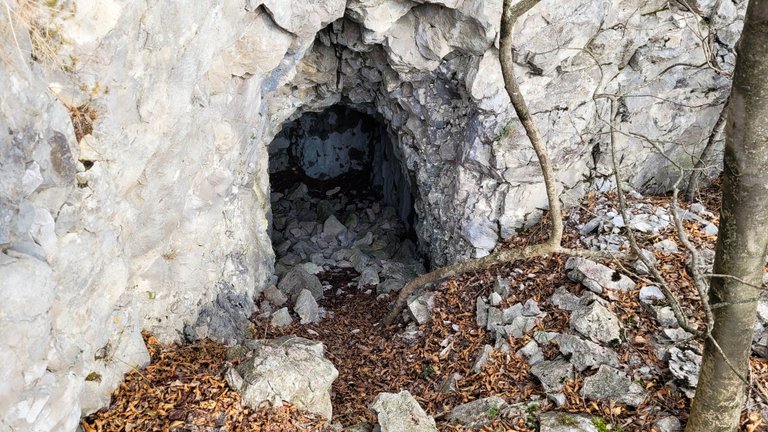 |
|---|
There were kilometres of them, and they were even built on four levels. Due to its proximity to Gorizia, it was the last defence position of the Austro-Hungarian army, which defended itself here in 1915 and 1916 against attacks by the Italian armed forces. Imagine men defending it under a hail of Italian shells, just below the top of the hill in the steep slope along the precipitous cliffs. They were forced to live in caverns and shelters, with rainwater in a cistern, which was strictly rationed by their superiors.
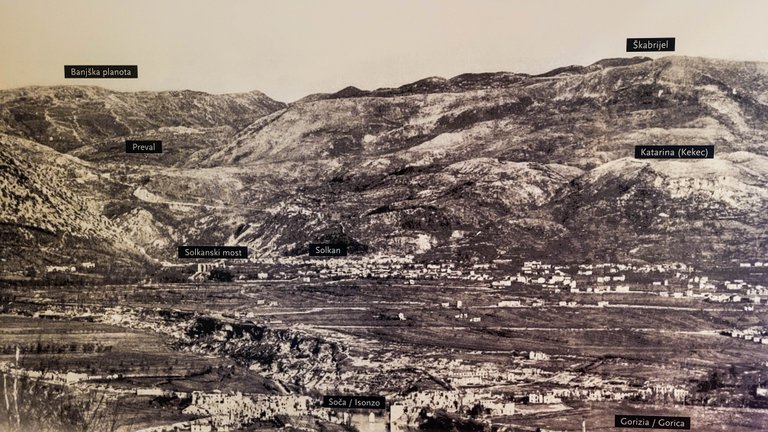
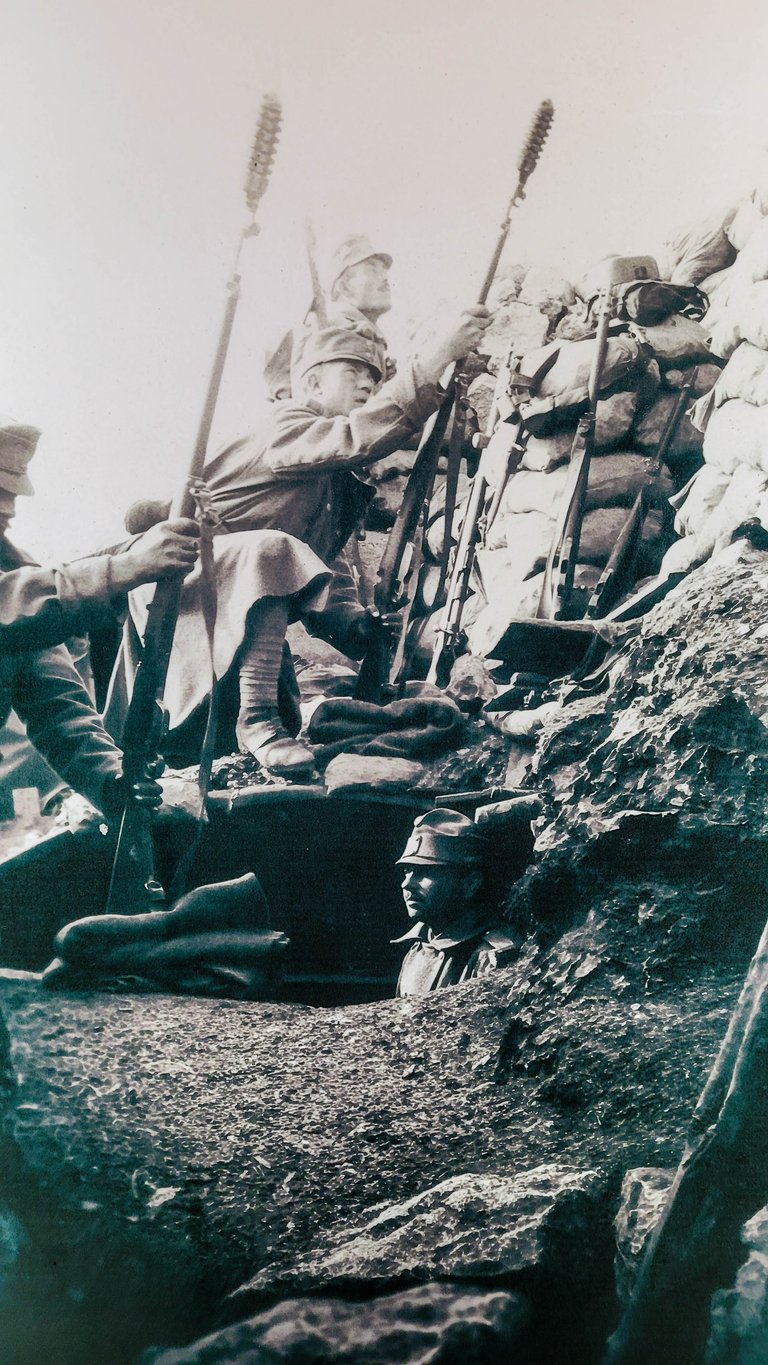
This time we climbed Sabotin from the direction of Goriska Brda, continued our journey through Italy, then re-entered Slovenia and followed the ridge, divided by the national border, towards our destination. A beautiful, very pleasant, and easy tour. As we walked, my son and I talked about the tunnels and caverns we were walking through, while my wife enjoyed the beautiful views. Something for everyone 😊
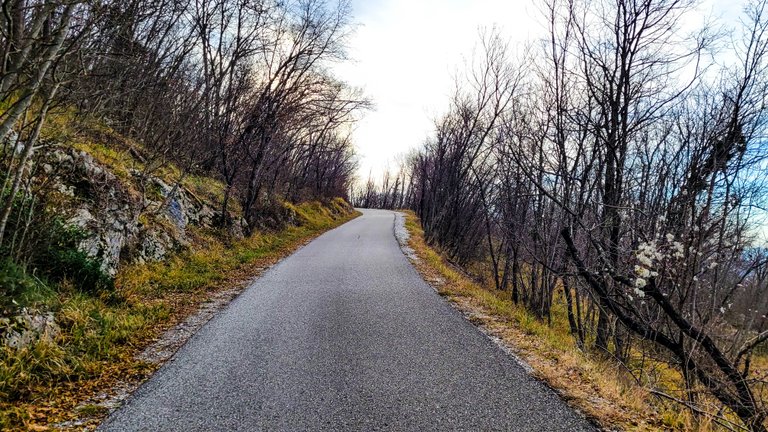

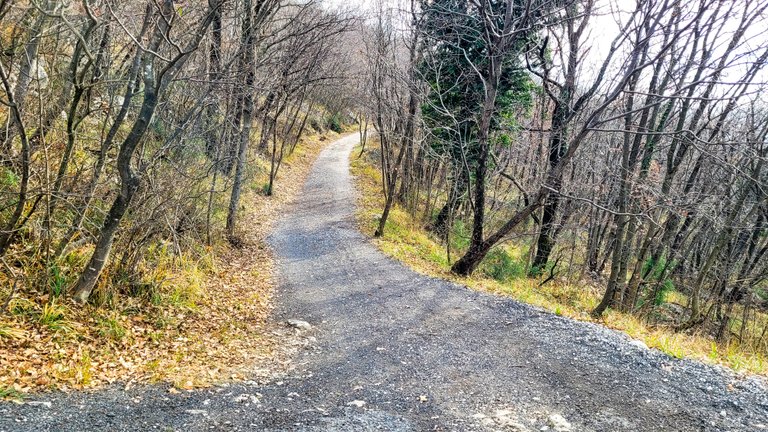

We started our journey on the Slovenian side at the Pyramids, which were built by the Italian authorities after the end of the war, when they created a memorial site in this area. The pyramids mark the front line that took place here. There are seven of them in total, four large and three small.
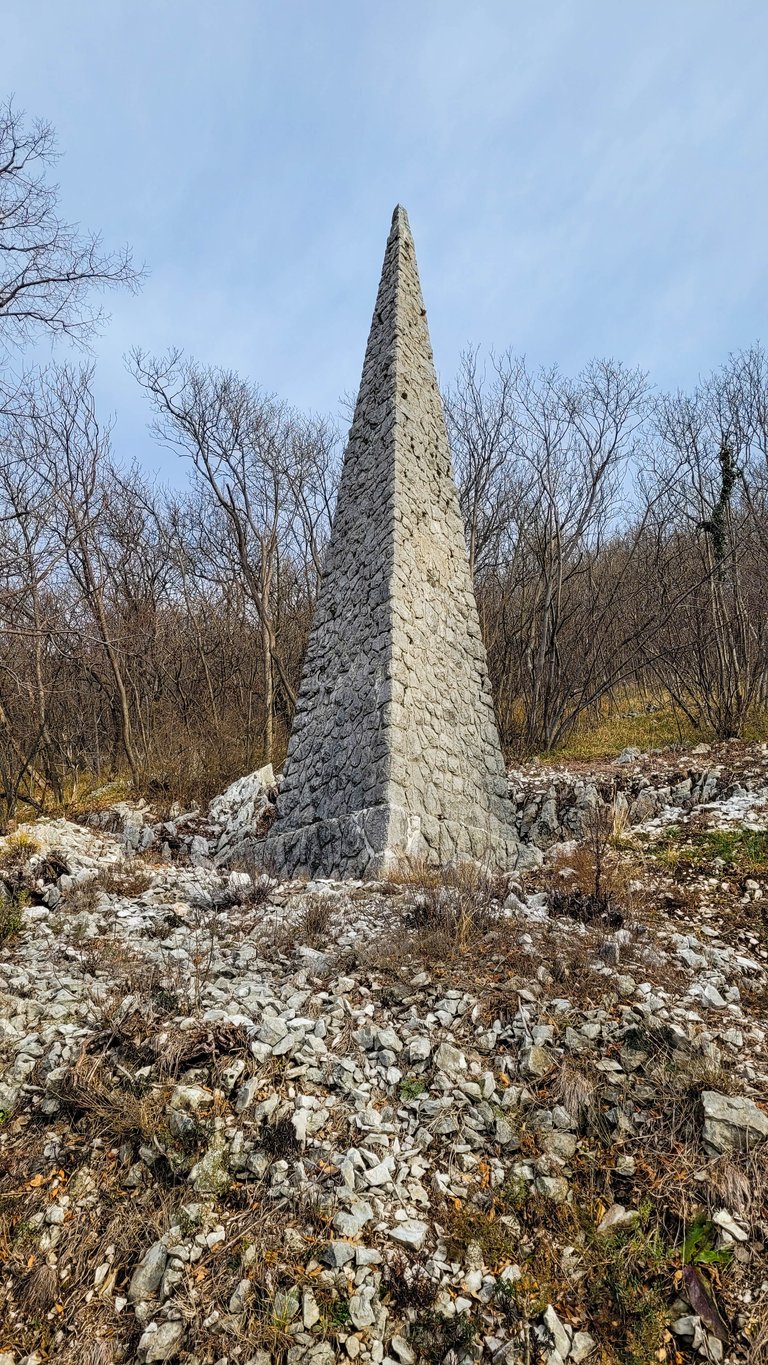
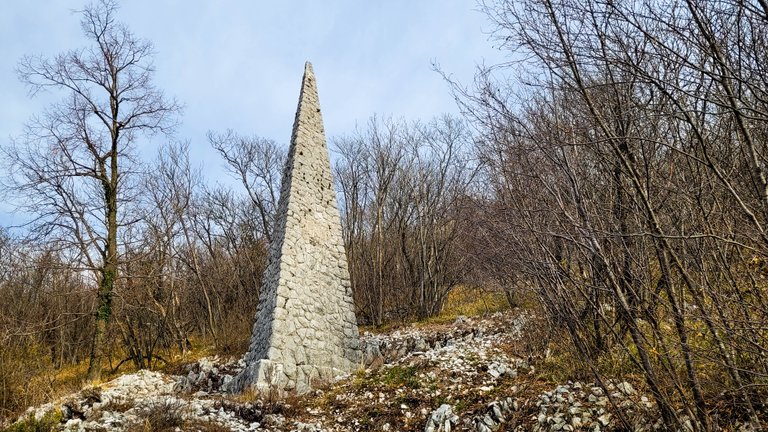


After 20 minutes of walking, we arrived at the ruins of the Church of St Valentine. It is located on the south-east of the Sabotin ridge, at 535 m, where the monks lived until the 18th century. The church was destroyed during the First World War, and the ruins have now been restored.

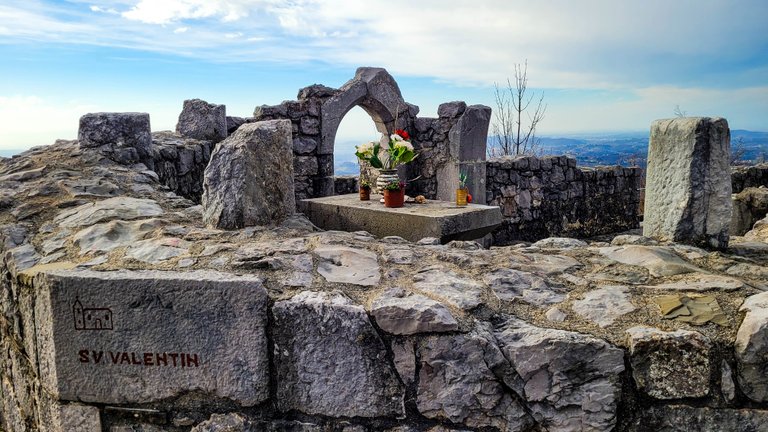
From here on, the path winds along the top of the ridge, where walking is a real pleasure. In fine weather, you'll be treated to magnificent views on all sides.
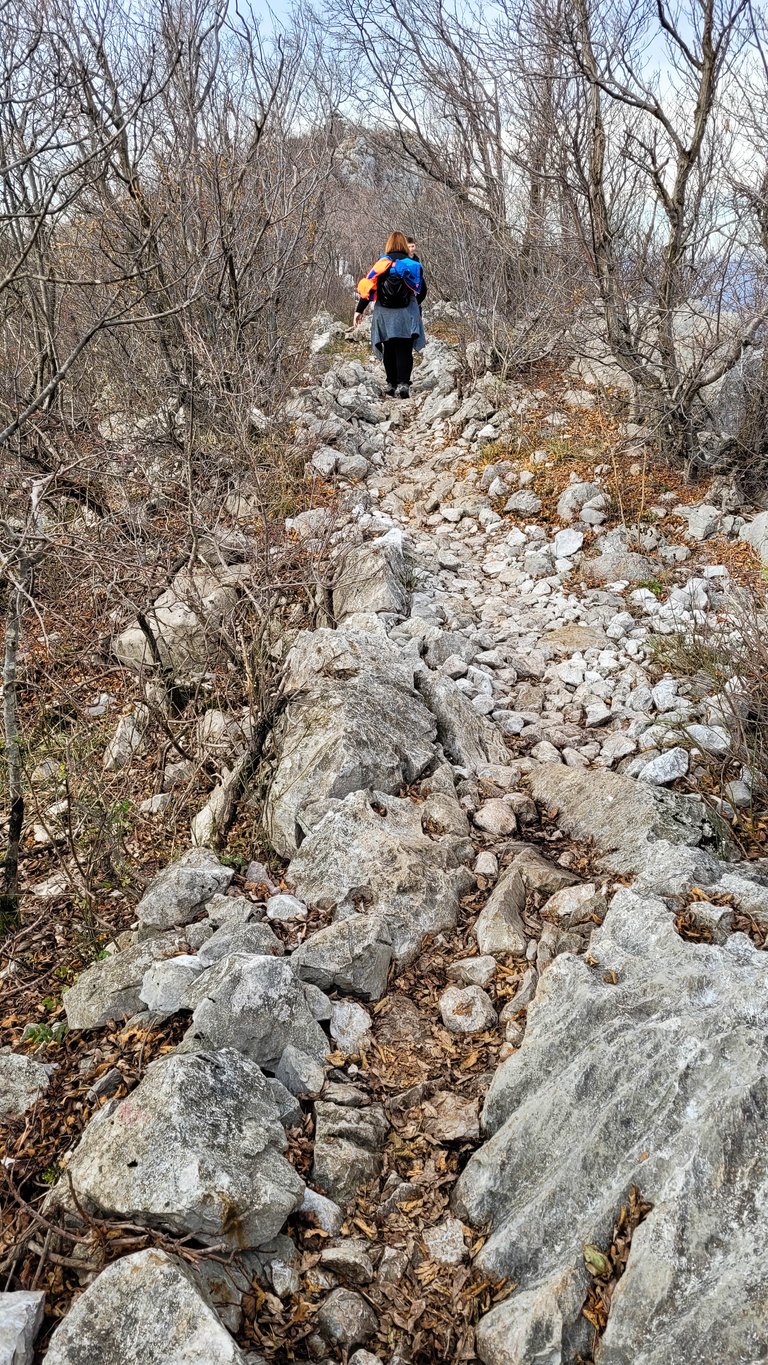




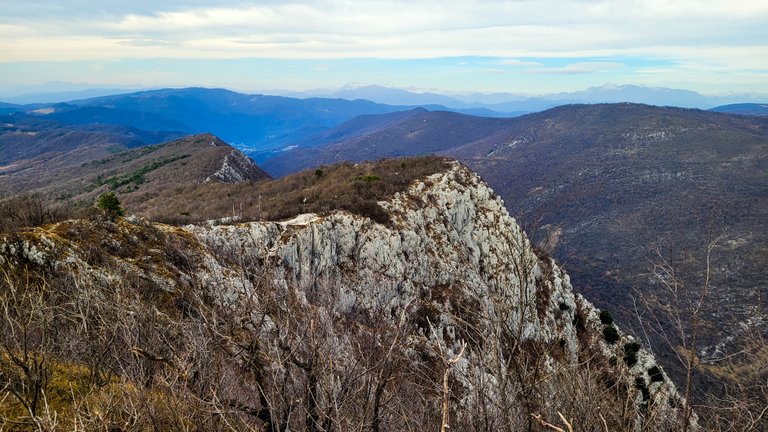
On one side, over a steep precipice, we can see the emerald green of the Soca River, and above it, the Holy Mountain, which seems to be reachable with your arms.

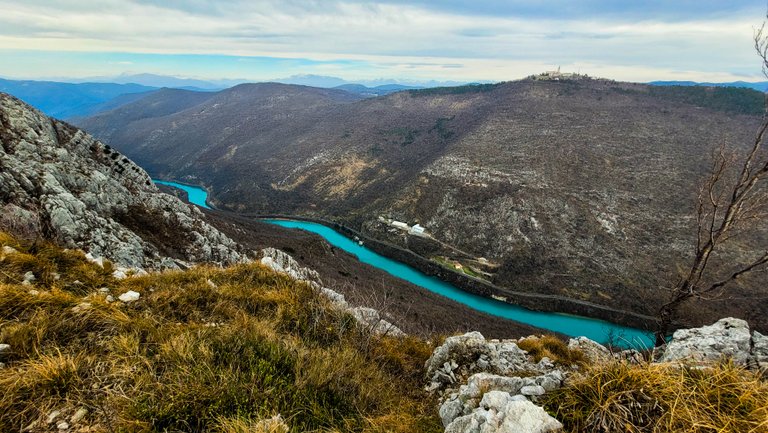
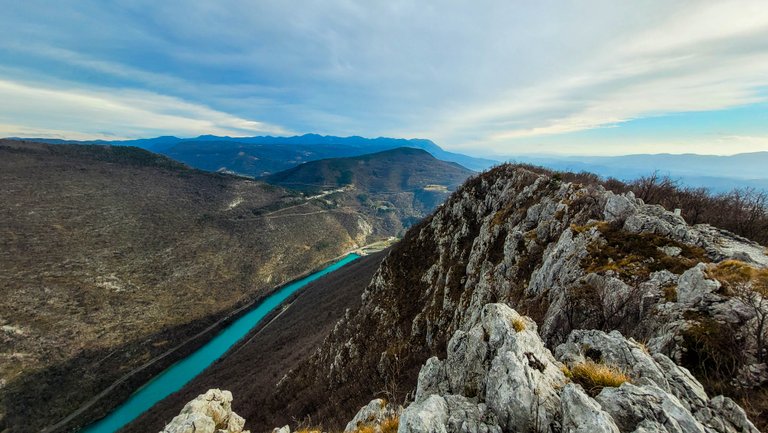

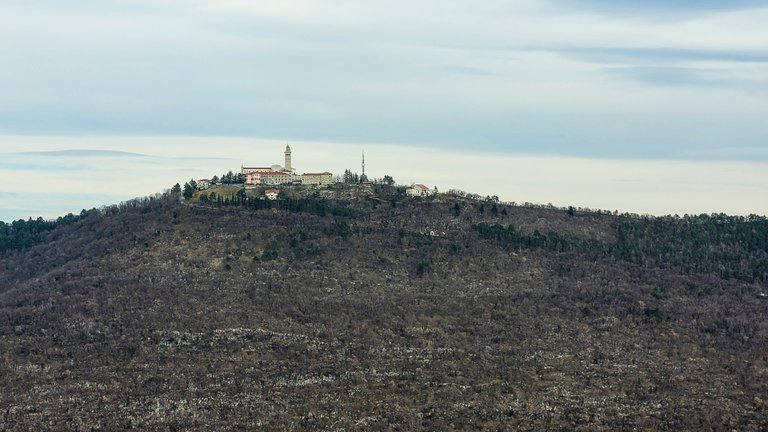
We were constantly crossing the border between Slovenia and Italy, which is also indicated by the border stones that are placed every few metres.
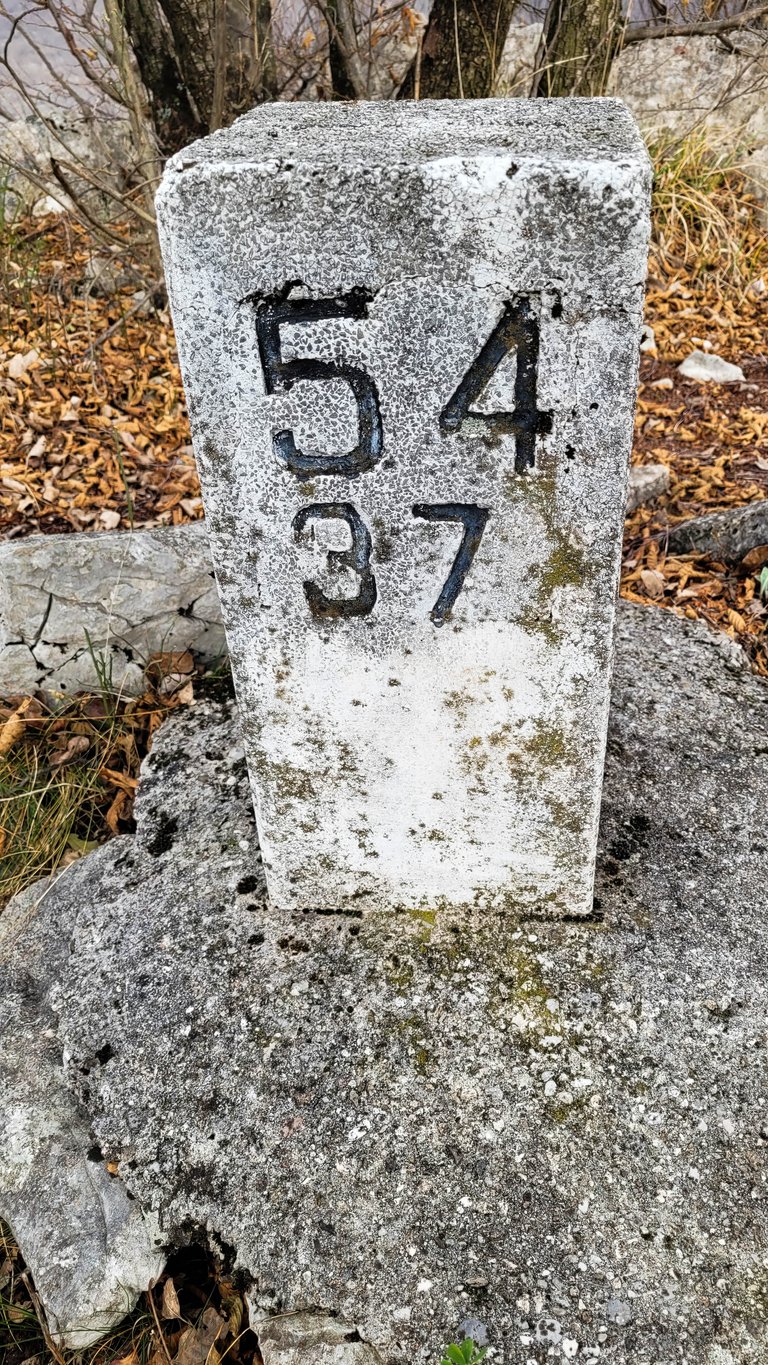

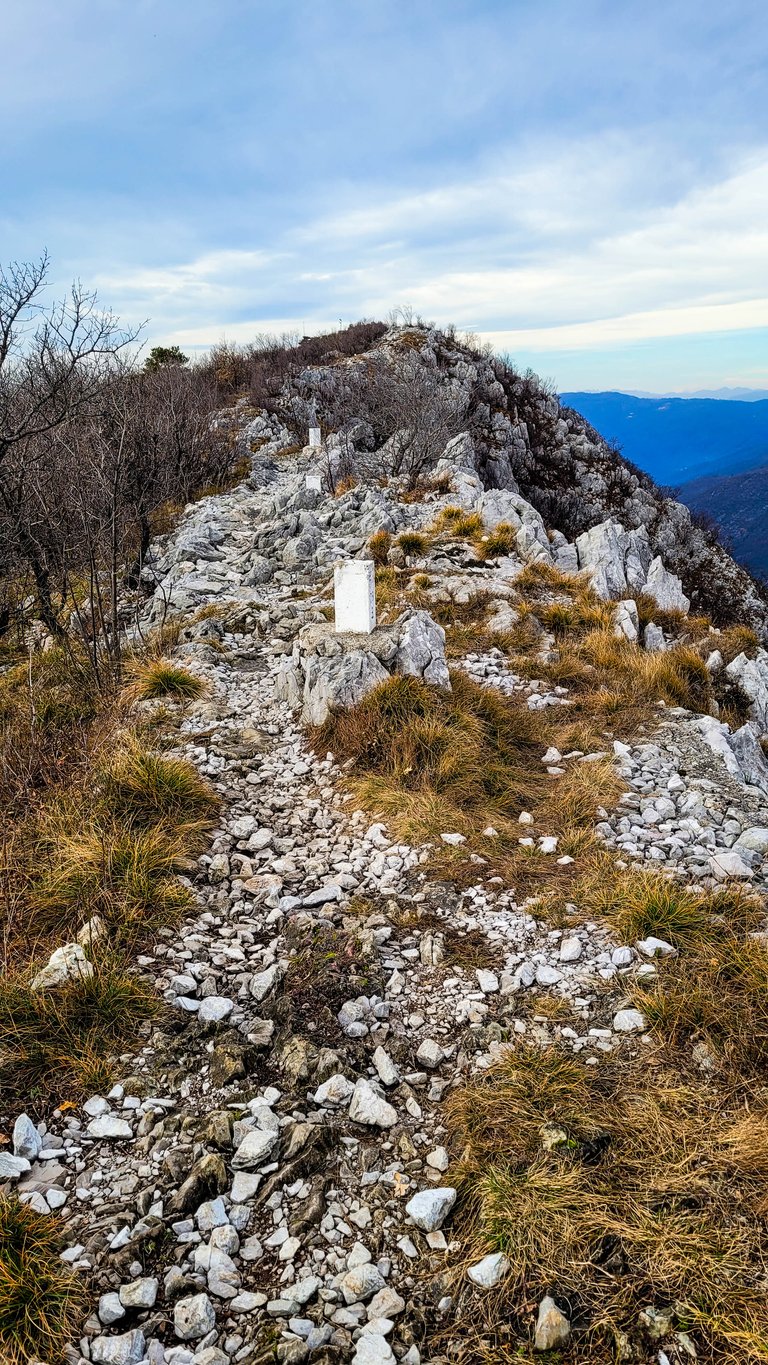

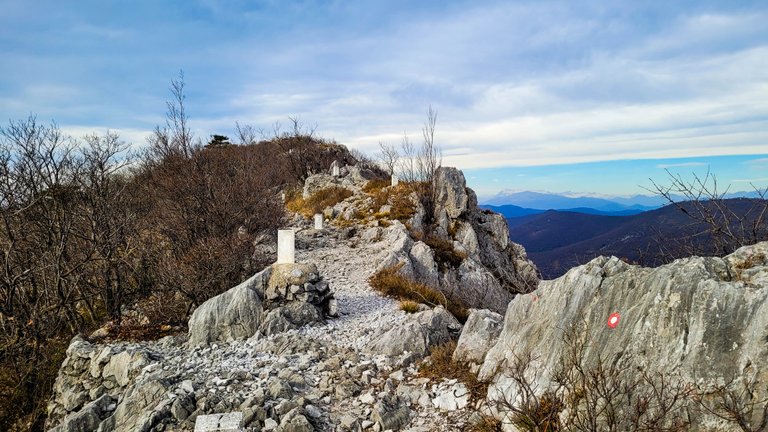
After about 40 minutes of walking, we reach the top of Sabotin, where there is a registration book.
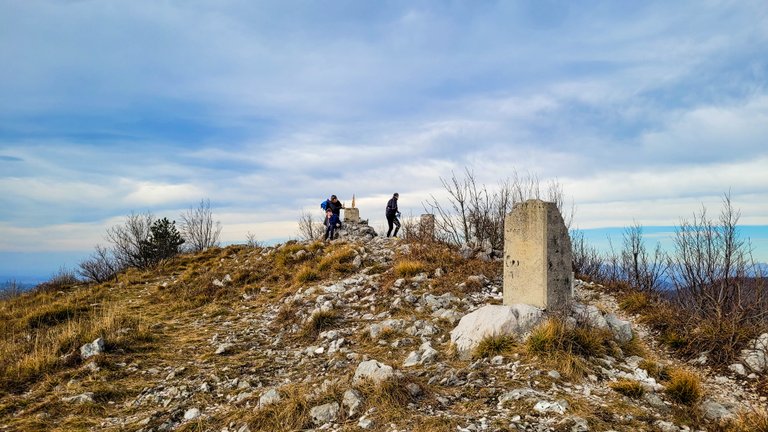
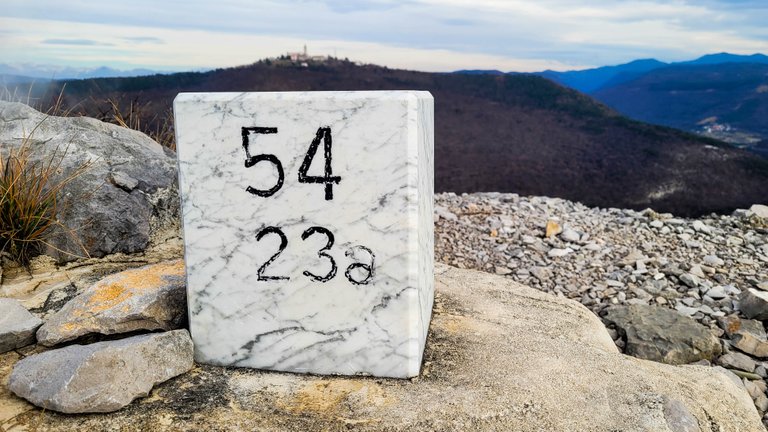
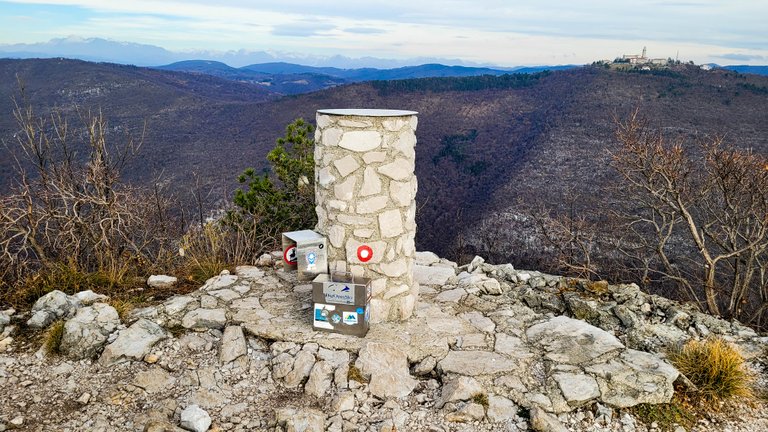
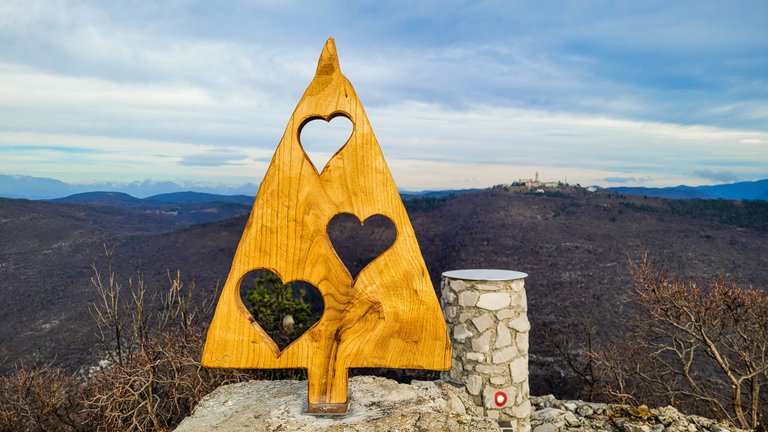
After the Second World War, the ridge of Sabotin was used as the national border between Italy and the then Yugoslavia, so access to the hill was restricted until Slovenia's independence. Border stones, bunkers and watchtowers wind along the top of the ridge, testifying to the former border.
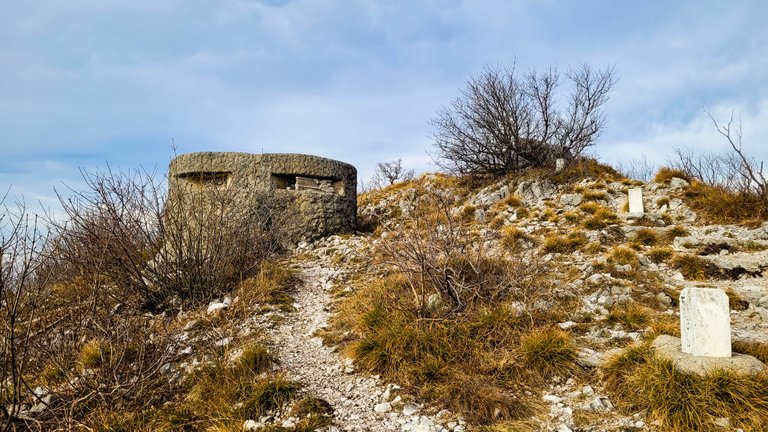
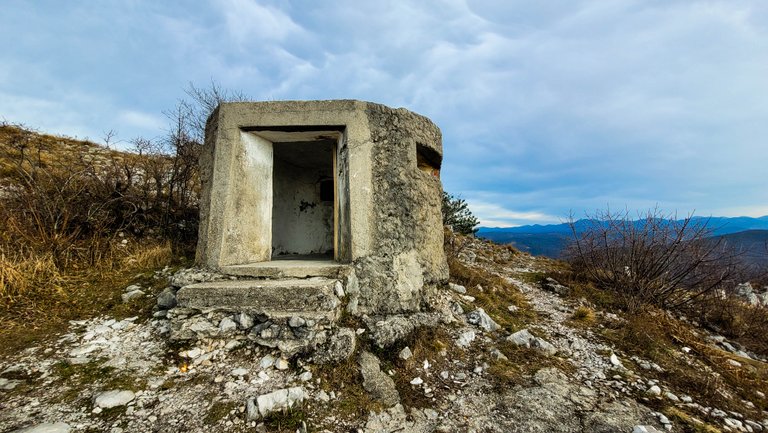

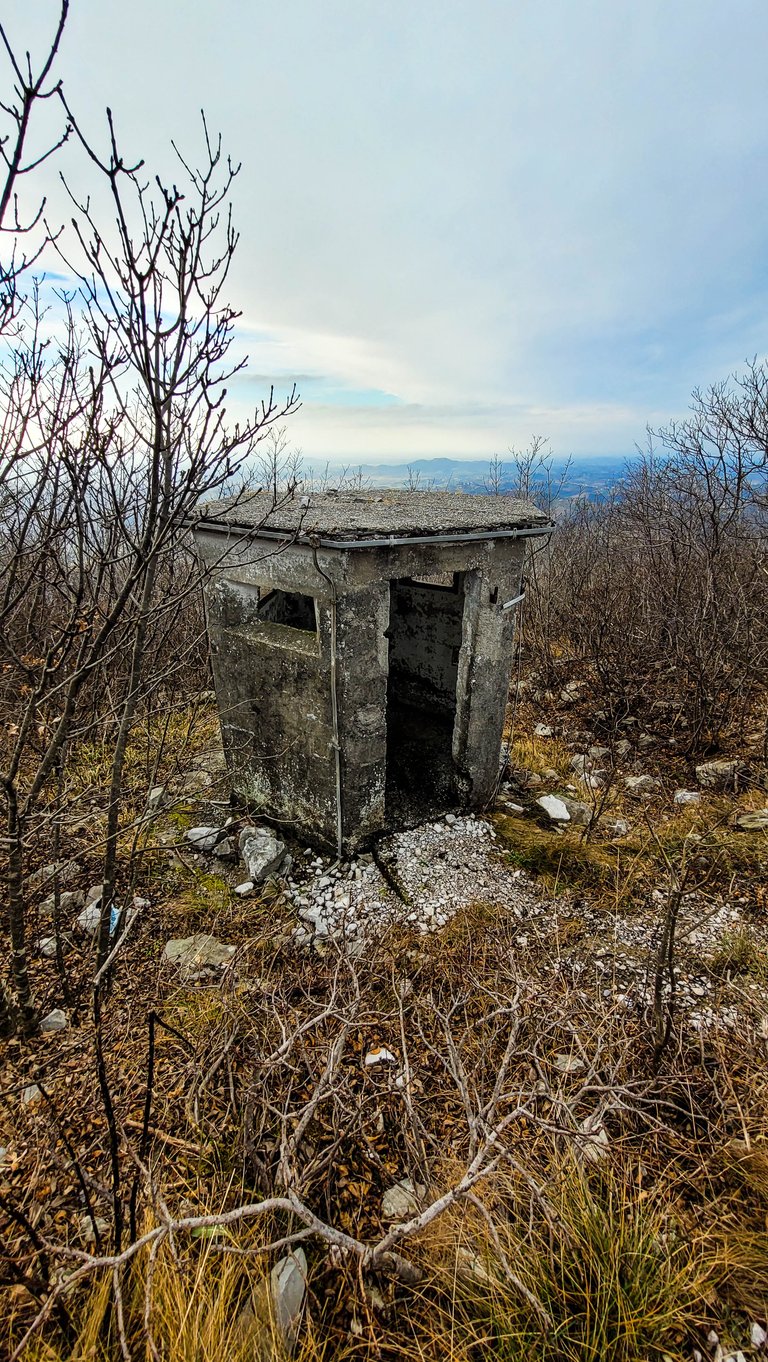

We continued along the ridge, which led us to the former guardhouse, now a guesthouse. There is also the The Park of Peace and a new small museum. The Park of Peace is a monument to a part of the battlefield, with restored caverns, underground fortifications, rifle trenches and a museum. The caverns are interconnected, with two entrances and exits, and air circulation was used to alleviate the effects of the humidity, which was responsible for many illnesses and wounds not healing. A monument that is a reminder and a witness of the bloody times.

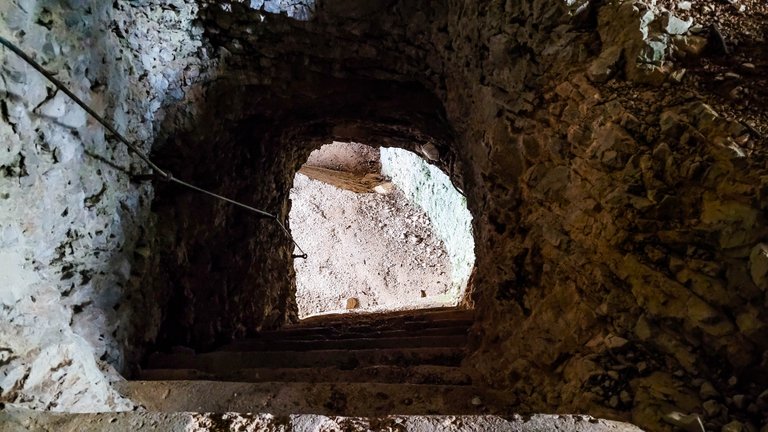
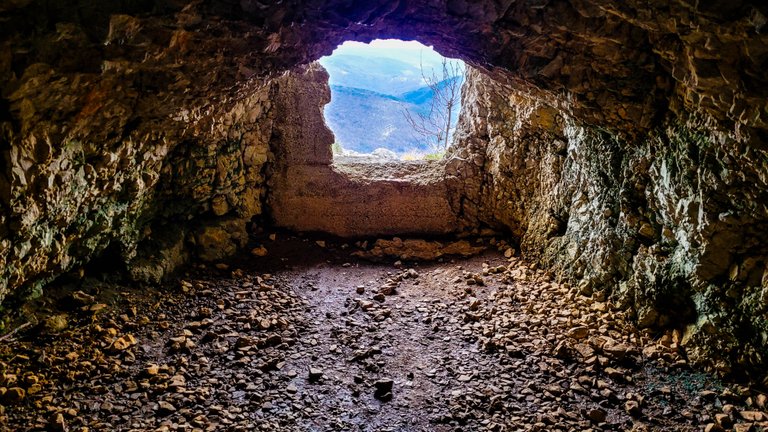

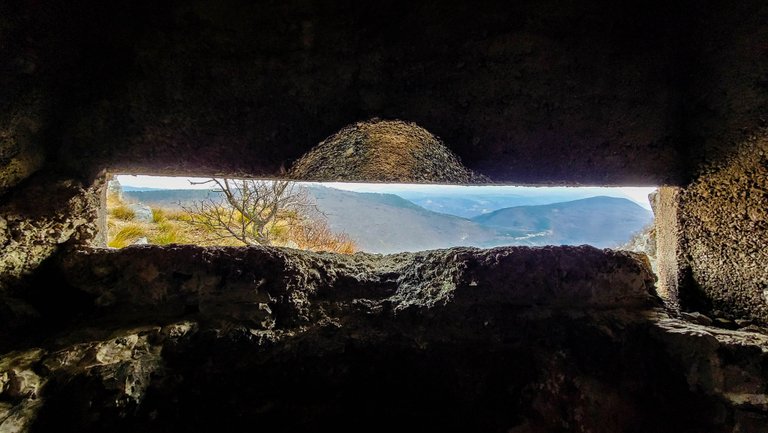
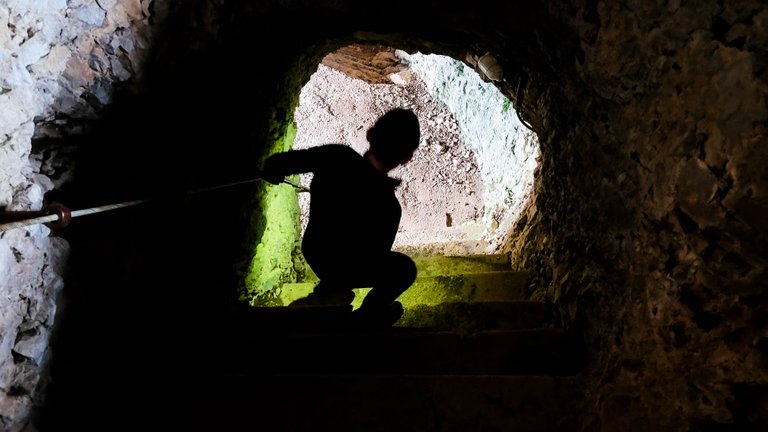
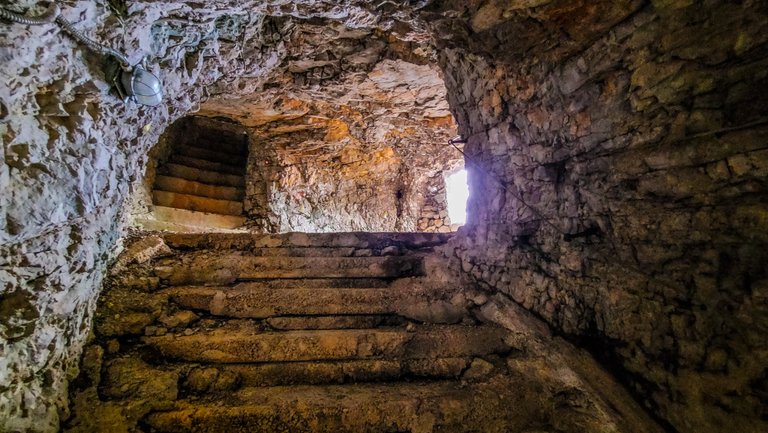


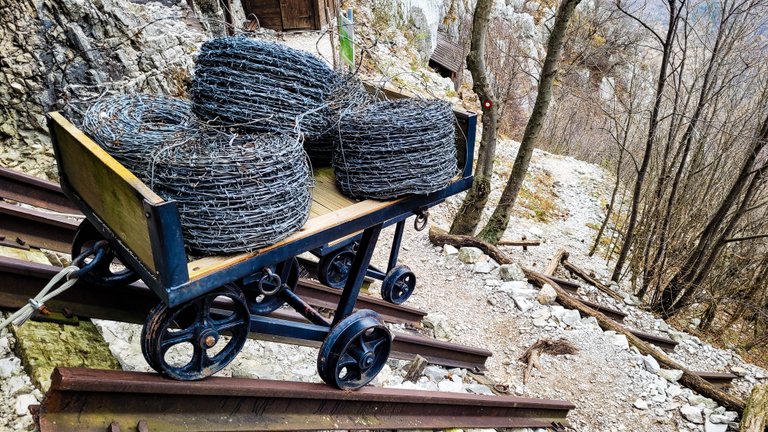

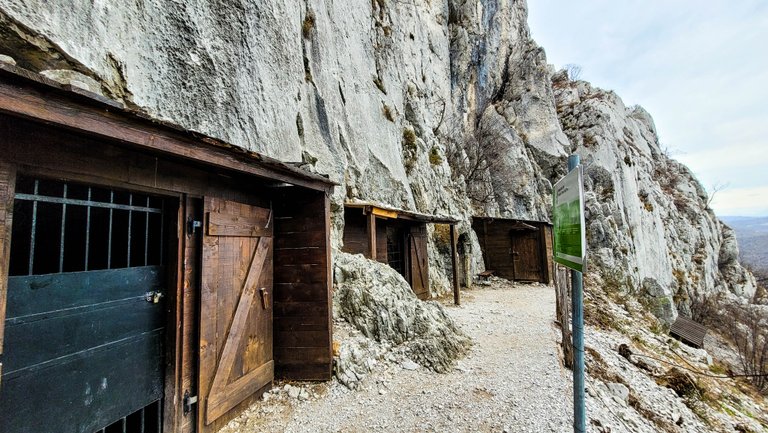
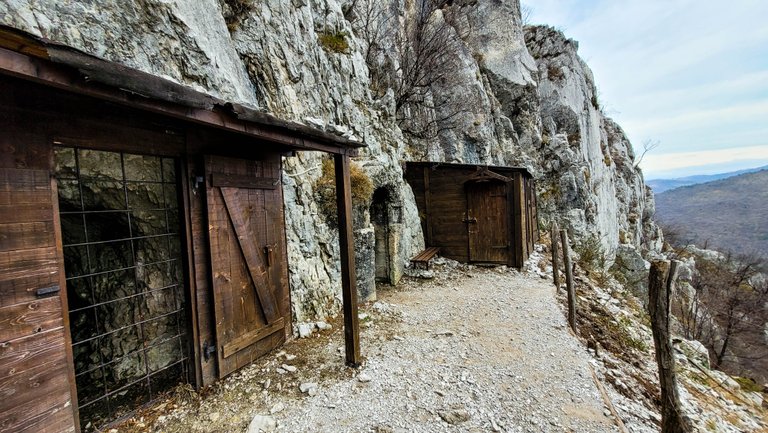
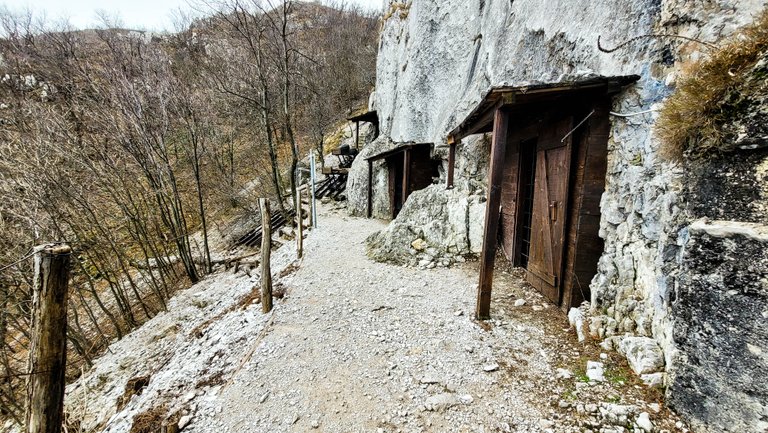
 | 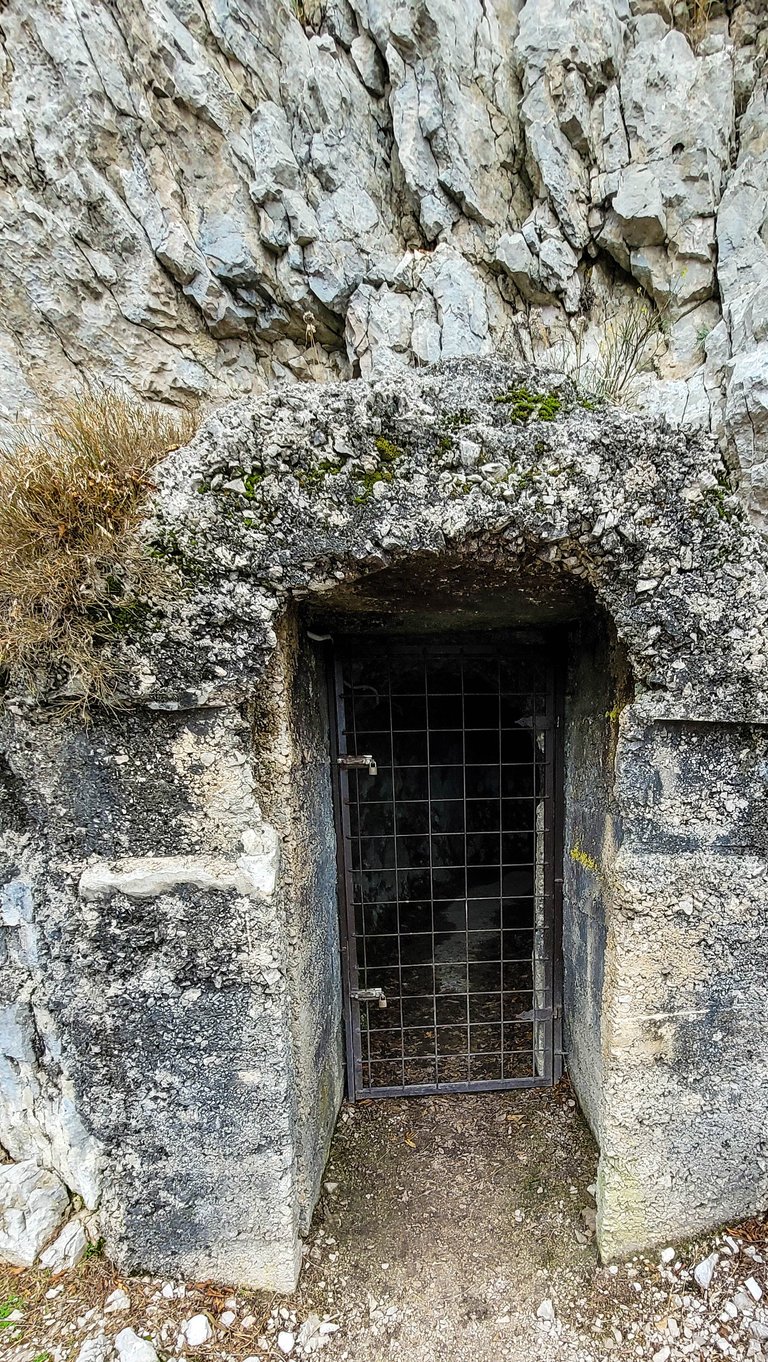 |
|---|
 |  |
|---|
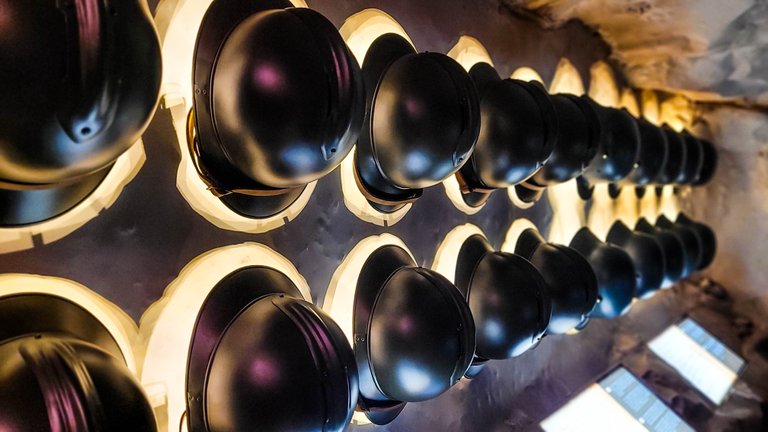
Water is a basic necessity for life, but here the story is different. The water tank was never allowed to be empty, if nothing else, water was needed to cool the machine guns. Cooling the weapons took precedence over the thirst of the soldiers. Hygiene was also very poor. Half of the soldiers died of poisoning, the rest from military projectiles. Later, a cable lift was built up Sabotin to bring much-needed water, food and, of course, weapons and ammunition from the valley. Its construction also solved the water problem on Sabotin.
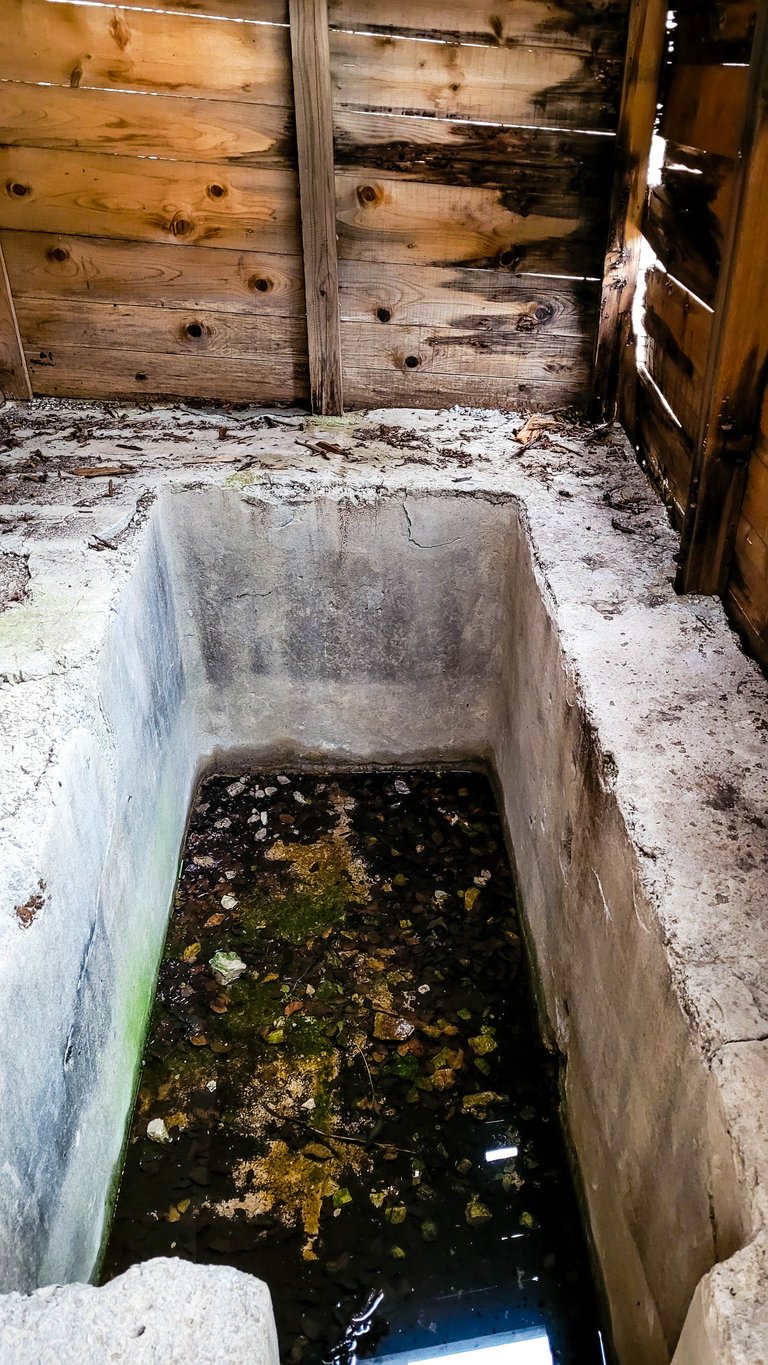
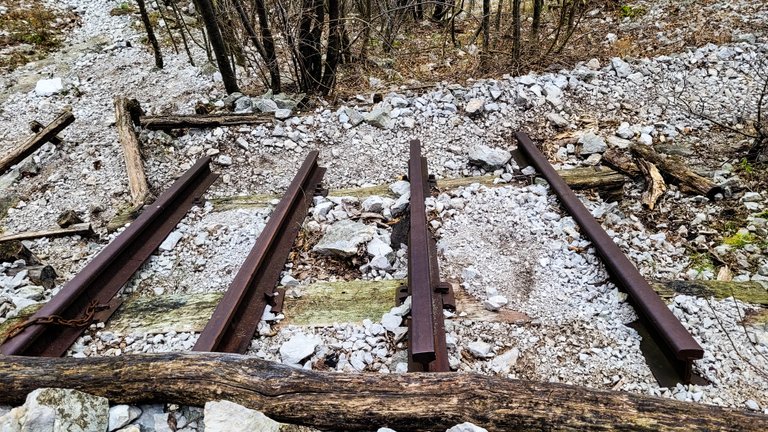
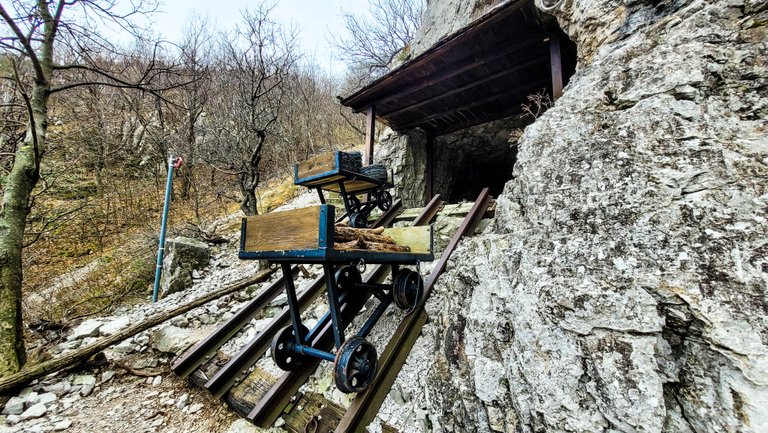
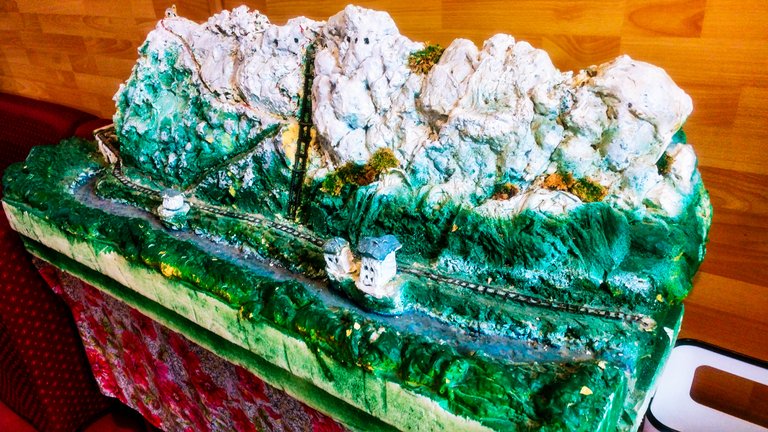
After visiting the open-air museum, we had lunch in the small restaurant. Since it was Sunday, there were a lot of people in the cafeteria, and just looking at the plates the waiter was carrying, it was clear that the food here was really good. Homemade gnocchi with venison goulash, sausage, sauerkraut, roast potatoes... It was all very tasty, so we really recommend a stop here.
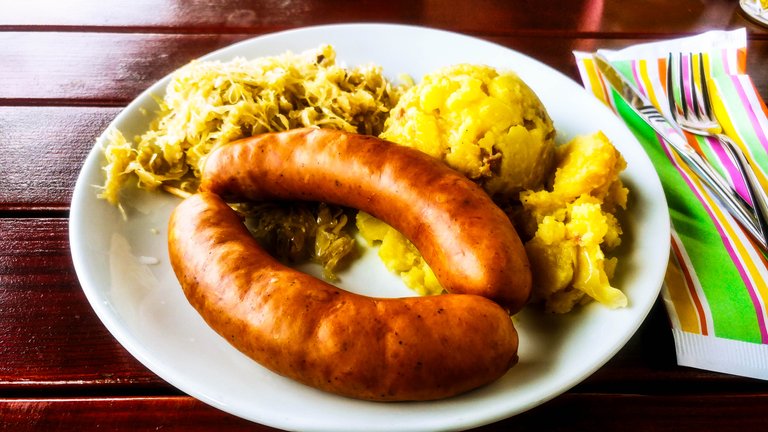
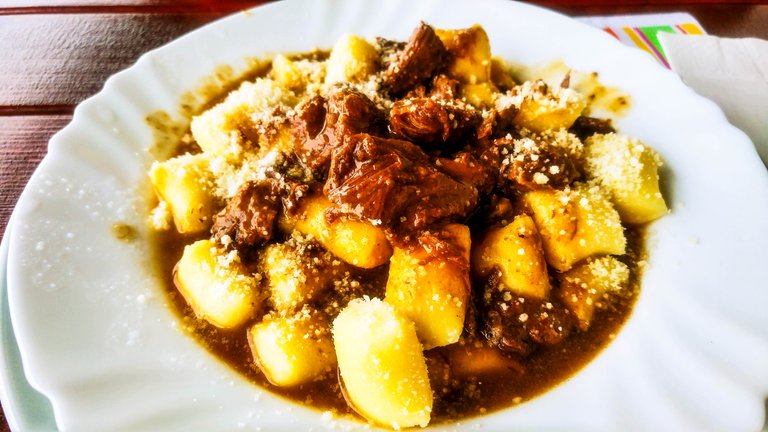
After lunch, we slowly made our way home with full stomachs. We chose a path through the shooting trenches, which led us to our starting point. It was truly impressive to walk through these trenches, which are more than 100 years old, and which offered protection to the soldiers during their movements and from the enemy's missiles. They are still perfectly preserved for their age.

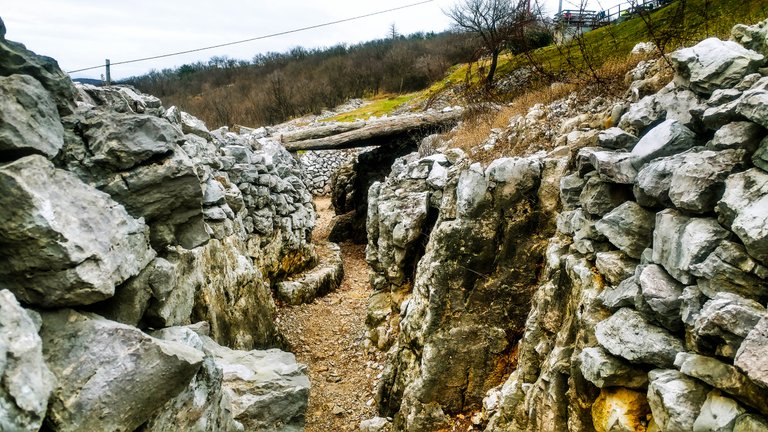
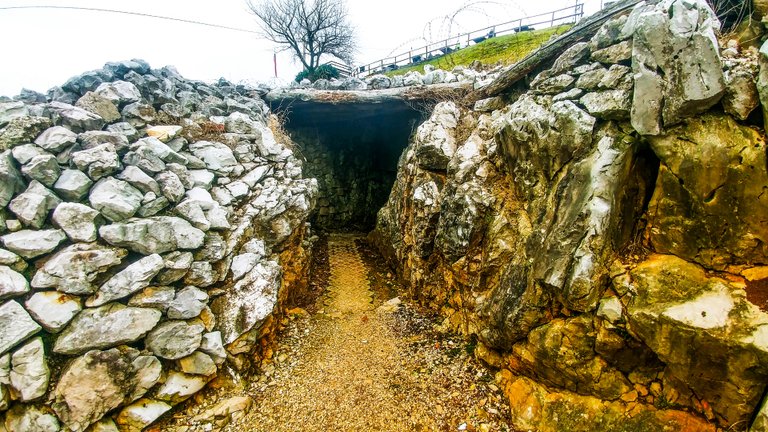
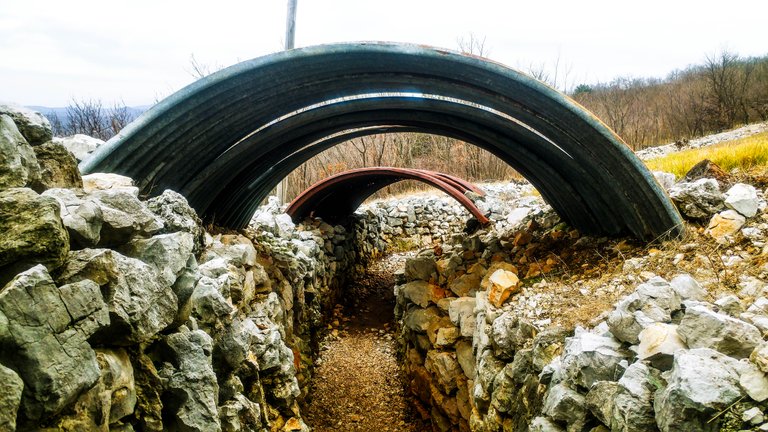
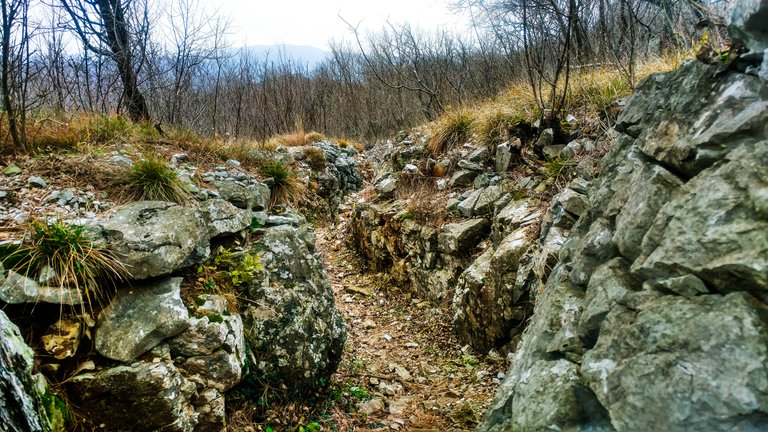

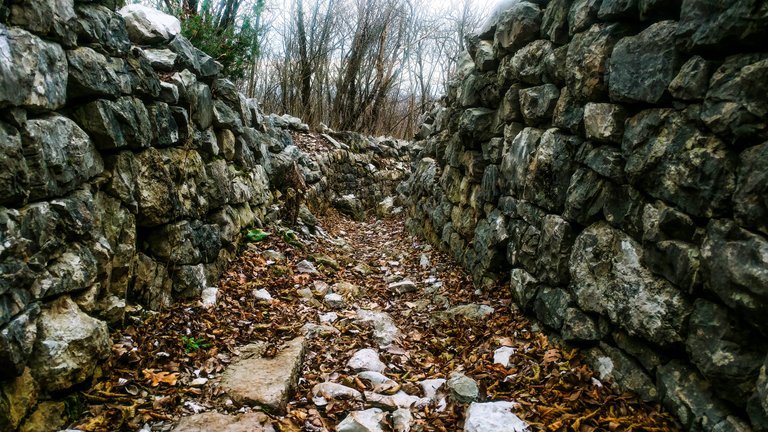
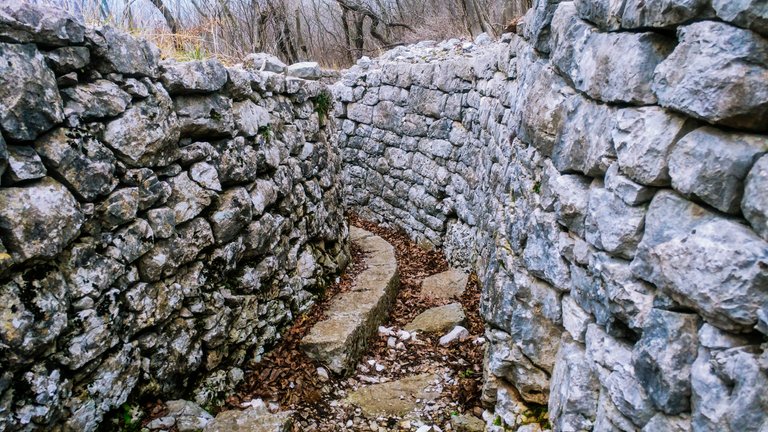

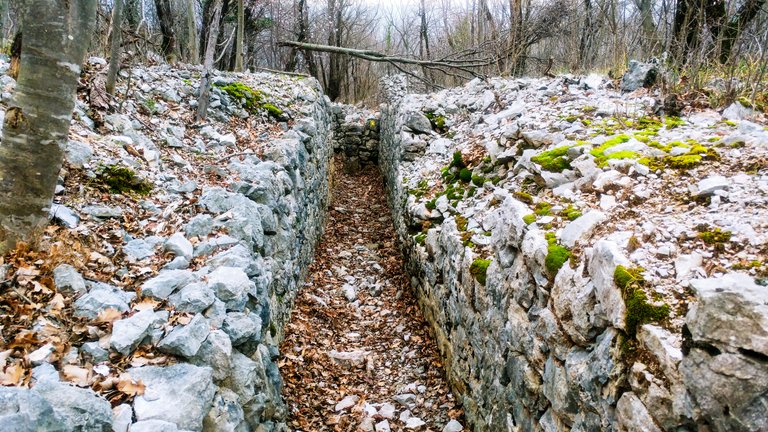

A visit to Sabotin allows you to exercise and relax in the nature, and the caverns and tunnels will certainly be very interesting for the youngest visitors. At the same time, the sight of the trenches and caverns from the First World War makes us think about the senselessness of wars and violence, and about the coexistence between peoples. In war, no one wins. Only grief and pain win.
Thanks for reading,
feel free to leave a comment, I will be glad to reply to.
Best regards, @miljo76

Congratulations, your post has been added to Pinmapple! 🎉🥳🍍
Did you know you have your own profile map?
And every post has their own map too!
Want to have your post on the map too?
Wow that was very interesting place full of history, the hiking in those mountain with that view is amazing, and the pictures great as always, greetings to the family @mijo76 friend
Thanks a lot, I wish you a great start of the year! Greetings to you and your family, too!
Thanks!
At first sight of the photos, I was wondering what is that emerald thing and realize it's a river while reading. Wow, how come it's emerald green? Fascinating! The natural view, the caverns, the history indeed makes this place so interesting. So much to see and learn.
Thanks, it's true, here you can learn a lot about the history of this area,...As for the colour of the Soca River, it is extremely turquoise. The Soca originates in a mountainous region where there is a lot of limestone and dolomite, which it brings with it. These components reflect the blue-green light in the water and cause this beautiful colour.
Incredible views, I loved the photos.
Thanks, the views here are really nice.! And thanks a lot for the boost!!!
Yay! 🤗
Your content has been boosted with Ecency Points, by @xerox94.
Use Ecency daily to boost your growth on platform!
you get a good picture and it's like a living painting @miljo76
I'm glad you liked my post @maytom! Thanks for stopping by!
!discovery 43
Hi @esther-emmanuel, thank again for the curration!
This post was shared and voted inside the discord by the curators team of discovery-it
Join our Community and follow our Curation Trail
Discovery-it is also a Witness, vote for us here
Delegate to us for passive income. Check our 80% fee-back Program
Thank you very much!
While reading this, I think about how devastating a war is and how absurd it is. There's no gain from it but pride and greed. Thanks for sharing a little bit of history, I didn't know about the history of Slovenia. By the way, I am wondering if it's illegal to cross the border of Italy?
Hi @sydney27, I totally agree with you, unfortunately humanity has not learned enough from history. Fortunately, I'm answering you from my home and not from some cold jail 🙃 Years ago, when we were still living under Yugoslavia, this border area was heavily guarded by the army, and there were also a few casualties in attempts to cross the border illegally. Today, both Slovenia and Italy are members of the European Union, the border exists only on paper, so you are free to cross the border anywhere, without any control or supervision. Thanks for dropping by!
Wow, so meaning to say you can travel to Italy without a visa? Omg! What a dream! Tuscany is a beautiful destination. 😍
Exactly. Even years ago, when border controls still existed, visas were not necessary. A passport was sufficient, or we border residents had some kind of passes.
Tuscany is beautiful, spectacular nature, picturesque towns and great food A few years ago my family and I spent a few days there. If you get a chance, I would highly recommend a visit.
That's amazing to hear. Tuscany is my dream place and I hope I can visit there with my family someday.
You'll definitely 👍
Excellent post.
Beautiful photos.
I zoomed in on the photo from which I finally concluded that it was a river of beautiful color 🙂
When you wrote that the battles between Italy and Austria-Hungary were fought there, I forgot the historical fact that at the beginning of the First World War Italy was in an alliance with Germany and Austria-Hungary and that in 1915 joined the Antlanta alliance (I studied history a long time ago, and the focus then was on one, southern front, solunski...).
2x thanks! The Soča River has a really unusual and extraordinary turquoise colour. Salonika Front took place in your region, if I'm not wrong, in the area of Serbia and Greece. Our education taught us more about the Isonzo Front, because the fighting took place in the area where I live, and vice versa.
I missed your Christmas greetings, but I wish you a prosperous 2024! I hope your preparations are going well. Cheers 🥂
The Solanika front and the battle at Kajmakcalan, in Macedonia.
Now I'm reading about the battles in Slovenia. In 2 years and 4 months, the Italians fought 12 battles until they were able to defeat the Austro-Hungarians.
And it's no wonder where there are so many bunkers and trenches in that location, strong battles took place there...
We celebrated Christmas, went to work from Tuesday.
To new tasks and victories🙂
All the best to you in the new year!
Hiya, @livinguktaiwan here, just swinging by to let you know that this post made it into our Honorable Mentions in Travel Digest #2115.
Your post has been manually curated by the @pinmapple team. If you like what we're doing, please drop by to check out all the rest of today's great posts and consider supporting other authors like yourself and us so we can keep the project going!
Become part of our travel community:
Thanks a lot for your curation @livinguktaiwan and @pinmapple team!
Beautiful picture
Thank you 👍
First, congratulations for such an incredible publication. I really enjoyed it a lot with so much information!
And second, your photos are a delight to the eyes. 10 out of 10!!!!
Thanka a lot, I'm glad you liked the post and the photos! See you around